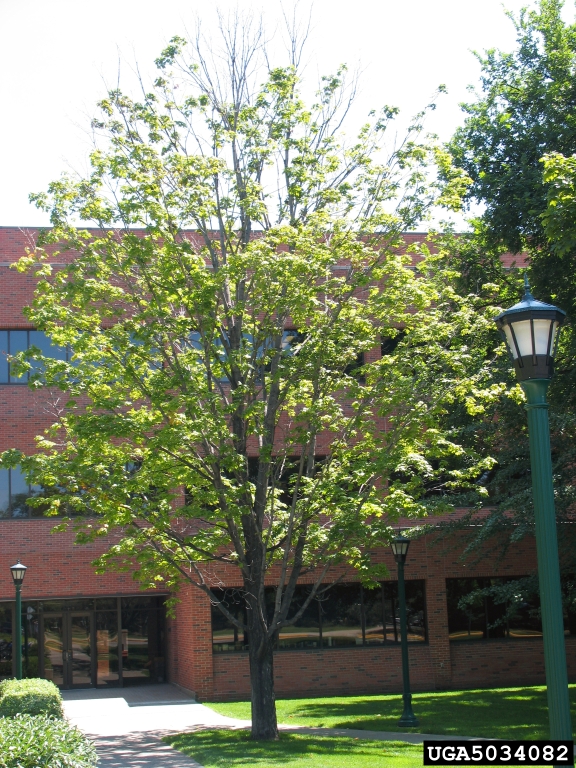By Dan Buckler, DNR Urban Forest Assessment Specialist, Madison, daniel.buckler@wisconsin.gov or 608-445-4578

Joseph OBrien, USDA Forest Service, Bugwood.org
Monitoring for tree health enables managers to anticipate maintenance needs. However, health monitoring is often inconsistent, generic or requiring advanced knowledge of insect pests or diseases. There can be a better way, and this might be one.
Since 2015, the U.S. Forest Service (USFS) and The Nature Conservancy (TNC) have spearheaded a tree health monitoring initiative called Healthy Trees, Healthy Cities (HTHC) that uses a simple methodology for lightly trained observers to identify potentially problematic trees. Disparate organizations have successfully employed the procedure, from Boy Scouts to the New York City Housing Authority. And now, the Wisconsin DNR has partnered with USFS and TNC to incorporate the methodology into the Wisconsin Community Tree Map, should any communities or organizations be interested in trying it out. One does not need to have a current tree map license to pursue this effort.
Research suggests trees provide optimal ecosystem services at maturity; therefore, a tree health monitoring program is essential to ensure trees reach maturity and the return on investments in tree-planting is maximized. The HTHC methodology includes a set of six variables designed by Forest Service scientists to capture signs and symptoms of stress in trees throughout their lives, from planting to maturity. These variables are leaf discoloration, leaf defoliation, fine twig dieback, crown transparency, crown vigor and crown light exposure.
The variables – collected through visual observation – are then statistically combined to form a stress index which can be used to prioritize management response to trees that exhibit the greatest need. Further, this stress index can help you track individual species over time, enabling you to detect the signs of yet-to-be-identified threats before they lead to widespread canopy loss.
The stress index is non stressor-specific, meaning it does not focus on one known or anticipated cause of stress. You wouldn’t be able to determine that a tree has oak wilt, for example, but you might be able to identify a problem, even early in the disease.
This process could be useful for those without tree health expertise or who are looking for a simple, standardized way of assessing tree health. An account could be made for you within the Wisconsin Community Tree Map to pursue a local assessment, or to simply test it out.
Training videos are available here to learn how to measure the six variables.
Contact the DNR’s Dan Buckler (daniel.buckler@wisconsin.gov) if you are interested in using the methodology within the Wisconsin Community Tree Map.
